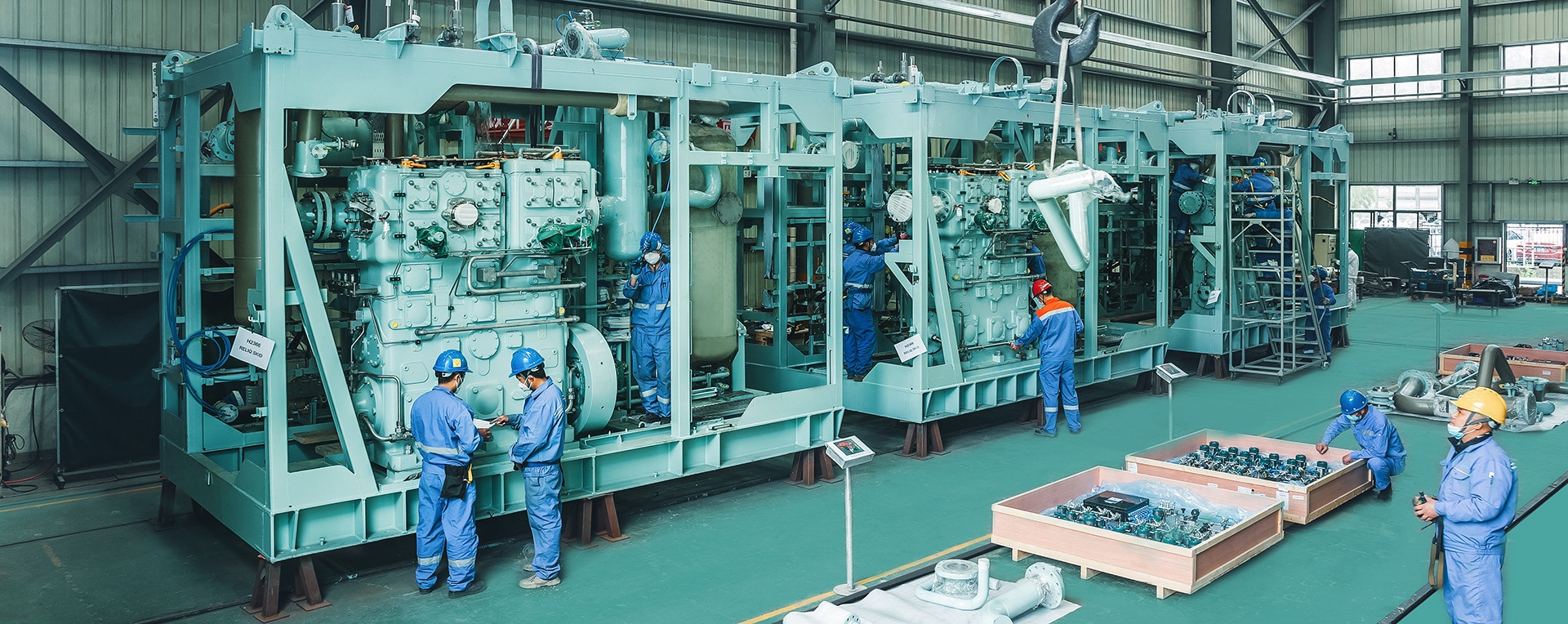FGSS
-
FUEL GAS SUPPLY SYSTEM
Gas supply systems (FGSS for short), whose main function is to provide fuel to gas users by receiving, storing, pressurizing and evaporating LNG, are used in dual-fuel vessels equipped with high pressure main engines.
In this fuel system, liquefied natural gas needs to be stored at a low temperature of about -163 ° C, and the LNG is pressurized and heated by evaporation into natural gas at the appropriate pressure and temperature to meet the fuel needs of the main engine and the generator.
The main FGSS package consists of the following parts:
a) bunkering station - transfer of LNG from shore/bunkering vessel to LNG storage tank.
b) LNG storage tanks - for receiving and storing LNG at low temperatures.
c) Tank junction - referred to as TCS: generally located directly above the LNG storage tank.
d) Low pressure LNG pump - pressurize and transfer the LNG in the LNG storage tank to the low pressure evaporation heater and high pressure LNG pump to meet the pressure demand of low pressure gas users. There are two types of submersible pump and deep well pump
e) Low pressure evaporation heater - receives the LNG from the low pressure pump, evaporates and heats it to the temperature required by the low pressure gas user.
f) High pressure LNG pump - receives the LNG from the low pressure pump and pressurizes it again to 320barg to meet the demand of the high pressure main engine.
g) High pressure evaporation heater - receives the LNG from the high pressure pump to heat evaporation to the required temperature of the high pressure host.
h) BOG (LNG Boiling Gas) compressor unit - compresses the LNG storage tank by thermal radiation and environmental heat transfer to produce (BOG) LNG boiling gas to a certain pressure.
i) BOG pre-heater - heats the BOG to the appropriate temperature according to the intake temperature requirements of the BOG compressor.
j) BOG aftercooler - The high temperature gas compressed by the BOG compressor is cooled to meet the temperature requirements of low pressure gas users.
In addition, the LNG gas system also needs the following auxiliary systems to ensure the normal operation of the entire system:
a) Water glycol system: provides heating/cooling media for low pressure heat exchangers, high pressure heat exchangers, BOG pre-heaters and aftercoolers.
b) Nitrogen system: used for the cleaning of LNG storage tanks, equipment, pipelines, fuel users and double-walled pipes.
c) Compressed air system: used to supply compressed air to the remote control valve to ensure the normal operation of the remote control valve.





